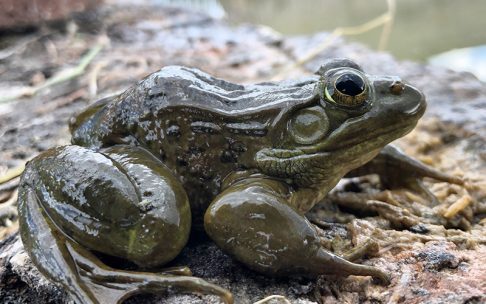
An adult male narrow-headed garter snake rests in the hand of Whitney Heuring, conservation and science manager at the Phoenix Zoo on Jan. 23, 2023. The garter snake resides in a glass enclosure on display for visitors. (Photo by Izabella Hernandez/Cronkite News)
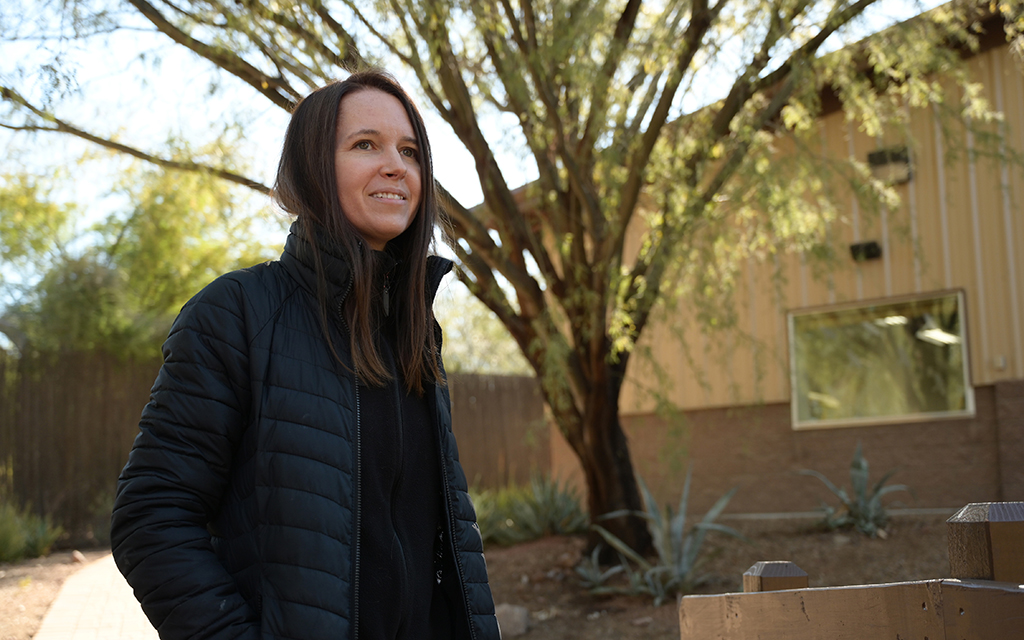
Tara Harris, director of conservation and science at the Phoenix Zoo, explains on Jan. 23, 2023, how the zoo uses the Arthur L. and Elaine V. Johnson Conservation Center to help threatened species. (Photo by Izabella Hernandez/Cronkite News)
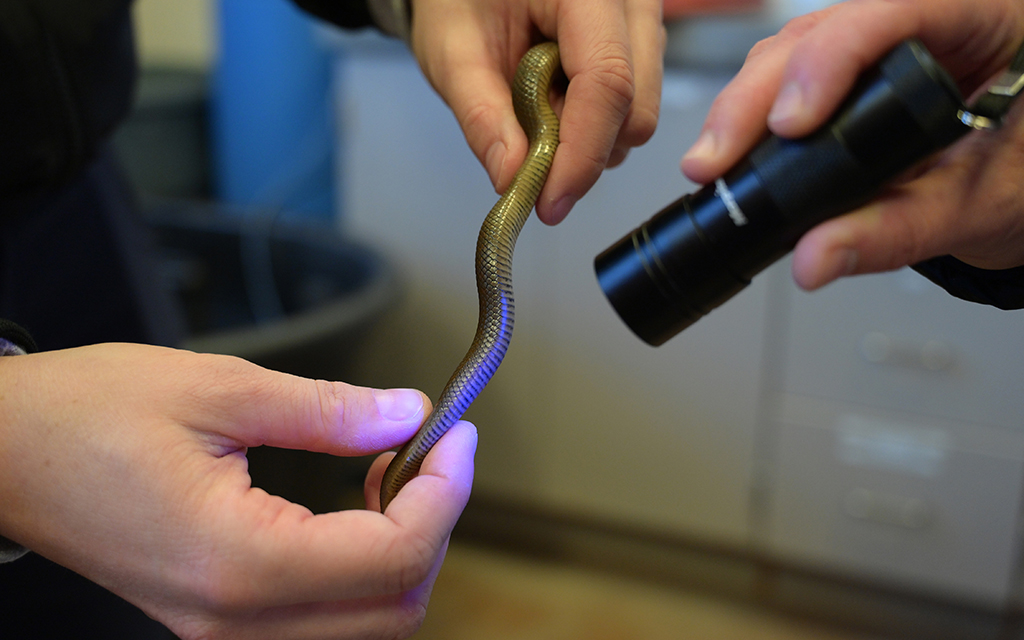
Whitney Heuring, left, conservation and science manager at the Phoenix Zoo, and Tara Harris, the zoo’s director of conservation and science, hold a black light to the belly of a juvenile narrow-headed garter snake on Jan. 23, 2023. (Photo by Izabella Hernandez/Cronkite News)
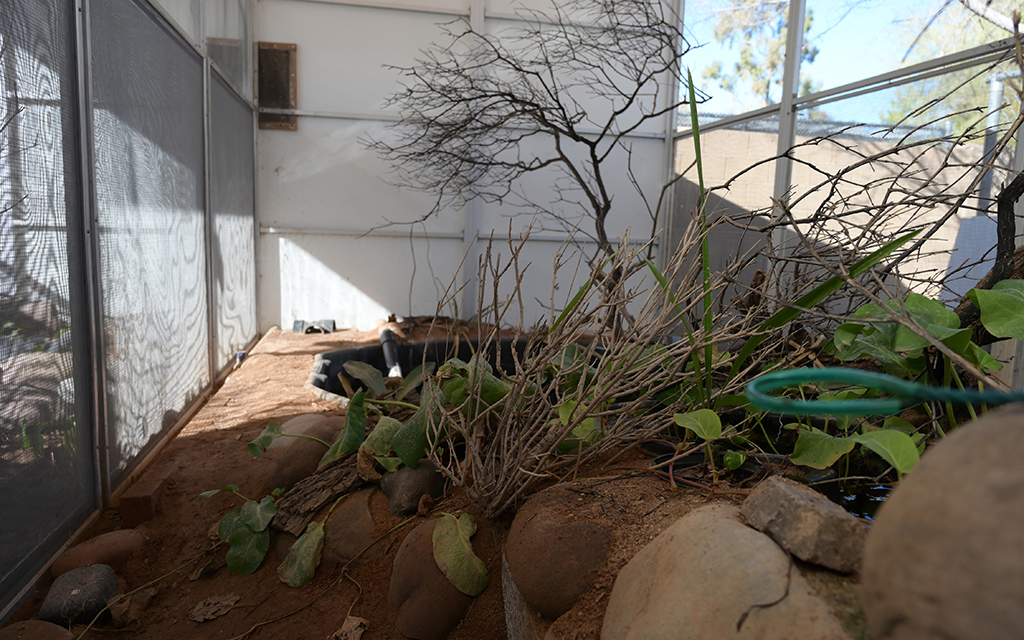
The narrow-headed garter snake’s breeding habitat in the Phoenix Zoo’s Arthur L. and Elaine V. Johnson Conservation Center mimics the aquatic snake’s natural habitat with twigs, a small pond and greenery. Photo taken Jan. 23, 2023. (Photo by Izabella Hernandez/Cronkite News)
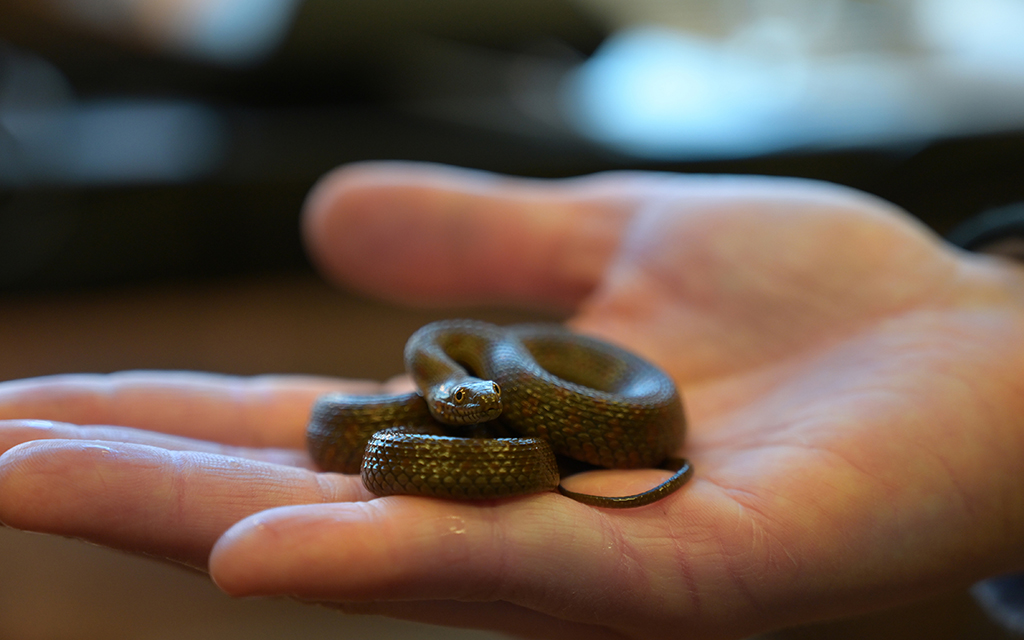
Whitney Heuring, conservation and science manager at the Phoenix Zoo, holds a juvenile narrow-headed garter snake on Jan. 23, 2023. The zoo is having success breeding the threatened species. (Photo by Izabella Hernandez/Cronkite News)
PHOENIX — A threatened species for nearly a decade, the narrow-headed garter snake is getting new life and help from scientists at the Phoenix Zoo.
Tara Harris, director of conservation and science at the Phoenix Zoo, said 40 of these snakes were born at its Arthur L. and Elaine V. Johnson Conservation Center in 2022. It was by far the most since the program began in 2007, and Harris is hopeful the zoo will have another successful year.
“These narrow-headed garter snakes are Arizonans just like you and me, but their future in our state is uncertain, and they need our help,” Harris said.
The aquatic snake, which is native to central and eastern Arizona and to western New Mexico, has been in decline for the past two or three decades, said Mason Ryan, garter snakes projects coordinator at Arizona Game and Fish Department.
The snake lives in cool, rocky areas in or near streams; it has been listed as threatened under the U.S. Fish and Wildlife Service since 2014 and is protected by the Arizona Game and Fish Commission.
In general, snakes are beneficial creatures, acting as natural pest control and adding to the food web’s biodiversity, Ryan said. These garter snakes are being threatened mostly because of invasive species in the state, and bolstering their population has proven tricky.
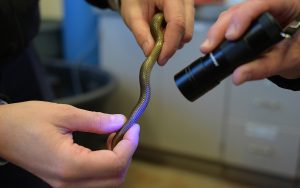
Whitney Heuring, left, conservation and science manager at the Phoenix Zoo, and Tara Harris, the zoo’s director of conservation and science, hold a black light to the belly of a juvenile narrow-headed garter snake on Jan. 23, 2023. (Photo by Izabella Hernandez/Cronkite News)
Invasive species such as crawfish and bullfrogs that compete with or eat the snakes, are a major threat, Harris said. The garter snakes specialize in eating fish, which doesn’t help, Ryan said. Arizona ranks as the highest state in the percentage of declining native fish species, according to the Federal Register.
Birds of prey, raccoons and other snakes are a few of the narrow-headed garter snake’s predators.
“The species is pretty hard to breed,” Ryan added, explaining it could take years to tell if the breeding and releases can make a big impact. The Phoenix Zoo has bred only 84 narrow-headed garter snakes since the program started in 2007. The snakes are born live, not hatched from an egg.
Ryan said the snakes are being released into Gila County’s Canyon Creek, which stretches from Tonto National Forest to Fort Apache Reservation. There were 24 juvenile narrow-headed garter snakes and one adult released last summer, Harris said, adding that the snakes are released at different developmental stages to see which survives best.
Because the snakes are typically about 3 feet long or smaller and difficult to find, Harris said they are tagged with numbers that can be read using a black light. Ryan said larger garter snakes can have a tracking device implanted under the skin.
Harris said it was a learning process to find a method to get the snakes to breed. The zoo uses an enclosure that mimics the snakes’ natural habitat with an area for brumation — a sluggish state for garter snakes during winter — running water, fish and trees.
The juveniles live in the “snake lab,” Harris said. They are kept in a tank with a lid that lets in heat and light from a heat lamp. Inside is almost all water with fish, plus a platform featuring little shelters on the water’s surface.
In 2021, the federal government helped by designating 447 miles of protected streams for the garter snakes, amounting to 23,785 protected acres in Arizona and New Mexico, according to the Center for Biological Diversity.
Harris said the public can help protect these snakes by not using invasive species for bait and not bringing in gamefish. Teaching and learning about the garter snakes and volunteering is another way to help, Ryan said.
“It’s nice to have those creatures on the landscape,” Ryan said, adding that it would be sad if future generations could never see the garter snakes.
The Phoenix Zoo, which has focused on plant and animal conservation for decades, currently works to increase the population of black-footed ferrets, Chiricahua leopard frogs, ferruginous pygmy-owls, desert pupfish and more, in addition to the narrow-headed garter snake.

